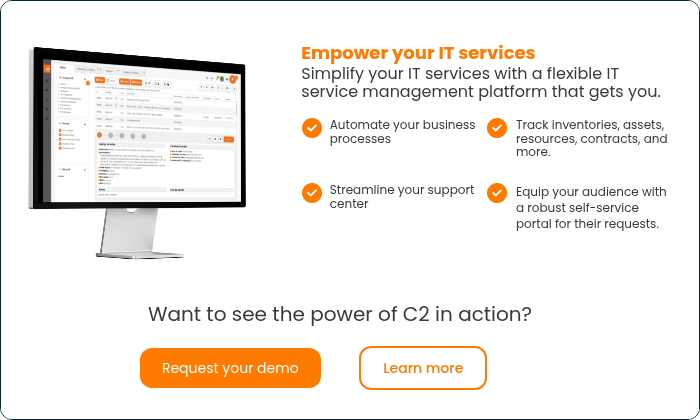Your system has been slow for some time now, the performance is down, your team is not operating at full capacity, and they might be asking you for additional resources as they are overwhelmed? The deadlines are extended and the escalations are more and more numerous? You need to establish performance indicators and don’t know where to start?
The reasons for these challenges may have slipped your mind and could make all the difference when searching for possible solutions and resolutions.
1. Wrong ticket assignment
Tickets may be assigned to a resource that does not have the skills to resolve the situation or perhaps that too many tickets have been assigned to a single resource to be effectively treated.
The solution: Proper categorization of tickets and automated assignments based on information from the ticket will greatly reduce the number of tickets that need to be analyzed by a resource before they can be processed.
2. An overload of user calls
When your users have difficulty finding possible solutions, they will try contacting you by phone to open tickets.
The solution: A well-documented knowledge base available on a Self-Service Portal. It can quickly provide customers with possible solutions to fix the problems themselves. In addition to developing clients' autonomy, it teaches them solutions to enable a rapid resolution of the problem. This usually also reduces the number of tickets created and calls to your team.
3. Distribution of roles and responsibilities
The bottleneck is a common problem for many processes. When, for example, ten resources receive requests simultaneously and then must all be approved by the same manager. When all solutions must be validated by one senior resource, you have to expect delays from that resource, which can no longer answer the demands and therefore becomes the bottleneck in the claims processing funnel.
The solution: A process analysis of its stakeholders is always the best approach when implementing it in a service. By eliminating bottlenecks by redistributing resources or changing their responsibilities, it is possible to improve the team's performance.
4. Undocumented solutions
When a resource treats a ticket for which he is seeking a solution, a certain amount of time is needed to properly identify the solution, document the ticket and complete the request. This step is a prerequisite to achieving optimal performance.
The solution: A knowledge base allows you to keep the information, making it available to the resource by referencing keywords. This will prevent the resource from searching for the information. Being well documented will save precious minutes and provide coherence and consistency in the solutions provided to customers.
5. Unknown impacts
Let’s take, for example, a server that fails; it is important to bring it back online quickly. But at the same time, the support tickets accumulate because the users connected to this server are unaware that the problem is more general.
The solution: Having visibility on the impacts between configuration items makes it possible to quickly take over the affected users, inform them and prevent the flow of related tickets.
6. Communication issues
When users are not informed that the IT department is already working on their problem, they will open a ticket, and when the ticket does not contain enough information for the resource to target the need, the resource will contact the customer to find out more. In both cases, there is a blatant lack of communication.
The solution: To overcome the first problem, it would be advantageous to inform customers, via the portal, of the known issues being resolved through a newsletter. For the second case, request templates with the necessary or mandatory fields. It would capture adequate information during ticket creation, thus reducing the need to make an extra call to your customers.
7. Process complexity
A process that requires several stages of validation and approval can sometimes be heavy and slow the process.
The solution: Several companies automate approvals and proceed with passive approvals on the other claims. This has the effect of speeding up the requests process and simplifying it.
Automation: your source of improvement
The source of slowdowns is often due to manual actions. When automation is implemented properly to support your business processes and make information more concise and accessible, response time and request resolutions are usually greatly improved.







